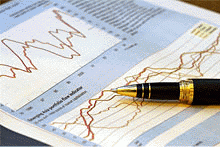

By Roger J Kerr
Having pulled-back from highs of 0.7800 to 0.7600 currently, the NZD/USD exchange rate does appear more prone to further decreases on the back of expected future Euro and Australian dollar movements.
Local NZ economic developments continue to have little impact on the NZD value against the USD, the day-to-day market movements instead being the result of changes in the USD value, the other side of the NZD/USD currency equation.
Economic and financial/commodity market developments are however key for the pricing of the AUD against the USD, which the NZD closely follows 90% of the time.
The AUD/USD rate has again recoiled downwards after its fourth foray above 1.0000 (parity) to the USD. There is no question that the positives for the AUD that pushed the currency up from 0.8000 to 1.0000 last year are not so dominant or intense this year. Australian interest rates were increased reasonably aggressively last year by the RBA and they are now on hold with stable rates forecast for 2011.
Global investment funds re-weighted hefty volumes of their money to emerging markets and commodity producers (such as Australia) in 2010 and will be more interested in cementing-in their gains than buying more in 2011.
Metal and mining commodity prices continue to increase in the global markets underpinning the AUD value. However, as the USD currency improves and US market interest rates move upwards, you have to wonder for how much longer the commodity prices can keep their upward momentum without some downward correction.
Adding to the risk in commodity markets is the continuing tightening of monetary policy in China.
The Chinese increased interest rates again last week as they seek to control 5% plus inflation and are prepared to sacrifice some GDP growth to achieve that objective.
Just a marginal slowdown in demand out of China should bring commodity prices off.
The Australian dollar in always vulnerable to falling commodity prices, however so far to date, we have not seen any adverse reaction in the commodity markets to the Chinese monetary tightening. Maybe it is still to manifest through in terms of tighter and more costly bank credit in China slowing up demand for raw materials (coal, iron ore, copper etc) for infrastructure building.
What is becoming apparent is that international currency traders and investors are seemingly reluctant to buy and hold AUD’s at entry rates well above 1.0000.
The Queensland floods will take 0.50% off their GDP growth this year and some fret about their residential property market overheating.
The view is still held that the next five cent change in the AUD/USD rate will be to 0.9500, not 1.0050. Where the AUD goes, the NZD will follow until such time as the RBNZ start to lift rates here later in the year.
The EUR/USD continues to correct back down from highs of $1.3800 to $1.3500 at the time of writing. The US economic data is now consistently stronger across the Board with rising US 10-year Treasury bond yields signifying the expectation of higher future inflation from stronger GDP growth this year.
The economic situation in Europe remains confusing and perplexing with positive German growth, rising food/energy price inflation, however still major economic and financial challenges in the southern EU member-states.
The Euro strengthened to $1.3800 in January following musings from ECB head Trichet that increasing inflationary pressures may cause an earlier lift in Euro interest rates.
The economic conditions and outlook in Europe certainly do not justify any interest rate increase this year and the ECB should be “looking through” and not reacting to non-controllable increases in food and energy prices in terms of their impact on the inflation rate.
German Bundesbank chief Axel Weber (a hard-line inflation hawk) has resigned after clearly not being wanted for the top ECB job.
On economic fundamentals alone the USD looks a far superior bet this year than the Euro. A return to $1.3000 and below in the EUR/USD rate should bring the Kiwi down towards 0.7000 over coming weeks/months.
The local moneymarkets have shifted the timing of NZ interest rate increases to the later September/October period. When the headlines of the RBNZ “tightening” monetary policy (that is, removing the March 2009 emergency stimulus) hit global newswires later in the year, the NZD could be expected to appreciate again on its own account. At that time the NZD/AUD cross-rate should break out of the established 0.7500 to 0.7800 trading range and move higher to above 0.8000.
--------------------
* Roger J Kerr runs Asia Pacific Risk Management. He specialises in fixed interest securities and is a commentator on economics and markets. More commentary and useful information on fixed interest investing can be found at rogeradvice.com
No chart with that title exists.
2 Comments
Presumably soft commodities will also be affected by any pull back.
Also other competition will arise from producers other than NZ either increasingoutput or substituting.
Wow risky bet Roger!
What happens when the Fed hits the print button again.
Would be interested to know your thoughts on NZ vs Canada/Swiss other safe haven currencies.

We welcome your comments below. If you are not already registered, please register to comment.
Remember we welcome robust, respectful and insightful debate. We don't welcome abusive or defamatory comments and will de-register those repeatedly making such comments. Our current comment policy is here.